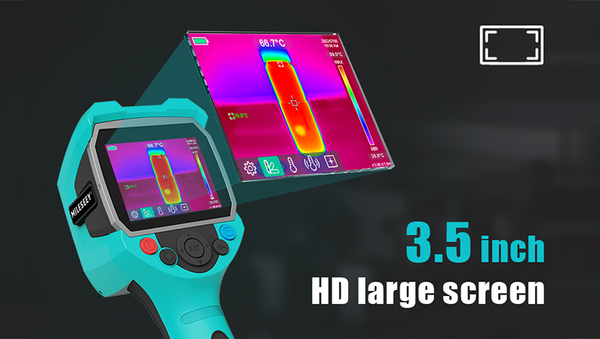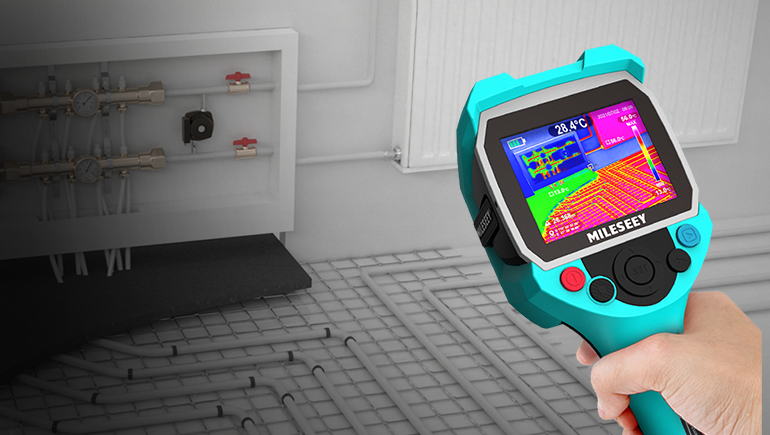Many individuals have never heard of thermal imaging inspections for home and building inspections. If you're one of the people that haven't, now is the time to do so! This technology makes it possible to find the walls without tearing them down.
These inspections are carried out for homeowners and building owners who require an energy evaluation, which is essential to ensure the safety and maintenance of the property.
Thermal imaging can diagnose issues on homes and buildings rather than just recognizing symptoms. Knowing what the problem is will make it much easier for you to have it resolved. Here’s how you can use thermal imagig for home and building inspections.
What does thermal imaging do for home inspection?
You might be curious about the precise usage of thermal imaging in home inspection. These cameras can detect nearly invisible issues to the naked eye by detecting subtle but significant temperature changes everywhere in the house.
Below is a list of thermal camera home inspections may find:
Moisture detection
It can be challenging to find moisture and water leaks infiltration until it's too late, which can cause significant harm to a property or a business. Without resorting to destructive testing, it is possible to identify the moisture and hidden water issues using a thermal camera home inspection.
A thermal imaging inspection detects moisture because of temperature changes induced by capacitance, conduction, or evaporation, which may be influenced by the weather or the relative humidity of the environment.
Plumbing errors
Use thermal imaging inspection to detect plumbing errors, record temperature changes in an area, find concealed leaks, determine the precise position of repairs, and evaluate water damage that is difficult to see. The temperature in a moist location will differ from the nearby dry areas. The procedure can evaluate drains taking wastewater from home and pipelines bringing mains water around and into your property.
Stucco inspections
A stucco inspection aims to measure the moisture content of your property's inside and exterior surfaces. Drilling tiny holes and putting a moisture probe inside the area are the two steps involved in determining the moisture content of specific areas. These tests will involve thermal imaging inspection and moisture reading on the surfaces of your property.
Pest infestation
Using thermal imaging inspection to eradicate rat and mouse infestations has various advantages. It is an efficient method of discovering and identifying pests like rats, bats, bees, mice, etc. It enables us to precisely pinpoint their locations and the locations of their nests if they are hidden.
Electrical issues
A valuable technique for identifying issues with electrical systems is quickly developing in home inspections using thermal cameras. It can identify problems in electrical systems before they cause the system's performance to suffer noticeably or before they endanger public safety by increasing the fire risk. It enables the electrician to find a problem while positioned safely away from the examined object.
Roof leaks
Finding the cause of roof leaks can be significantly aided by using a thermal camera for house inspections. Due to its excellent thermal capacity, water typically loses heat more slowly than the roof material around it. You can determine whether any parts have gathered moisture with a single image.
It is advised to take this thermal camera home inspection in the evening after the temperature drops outside because the roofs will seem purple or blue in the image and have given off heat. Since the moist components will still be heated, they will appear orange or red in the photograph.

What does thermal imaging do for building inspection?
Building maintenance can be done at a reasonable cost using thermal imaging. The structures can be examined easily, quickly, and without causing any damage. In turn, this lowers the cost of facility management.
The thermal imaging uses for building inspection are listed below:
Building diagnostics
A thermal imaging building inspection is used to check if the system is connected and functional before the flooring is put down. It can be expensive to fix a radiant system after installing the flooring. It enables construction workers to evaluate the building's diagnostics or energy performance while doing the most superficial modifications.
Energy auditing
A thermal imaging building inspection is one of the most effective ways to identify regions of energy loss in structures, making it an essential tool for many construction companies. The thermal cameras enable engineers to detect hot spots or heat loss sources rapidly.
Air infiltration
The cutting-edge technology of thermal cameras is utilized to find air leaks and infiltrations in a building. Inspectors can discover the locations of these air leaks by using thermal imaging. A thermal imaging building inspection is possible because the cooler or warmer air from the outside is moving into the building through the holes and cracks.
Energy efficiency
Thermal imaging inspection is the simplest and fastest way to find energy efficiency in structures. Thermal cameras help inspectors focus their attention so they can accurately diagnose the regions with efficient energy by displaying the precise locations of the energy issues.

Mileseey Thermal Imaging Cameras
When checking out a building's thermal efficiency, Mileseey thermal imaging cameras are top-of-the-line and excel in various applications. Thermal imaging inspection describes the process of creating an image of an item by detecting its heat signature.
Essentially, Mileseey thermal imaging cameras can detect and record changes in temperature by detecting infrared radiation and displaying the data as a spectrum of colors.
As a result, competent operators can accurately portray the building's energy performance in a controlled environment. Building owners can determine if their structures need maintenance or repair or if newly constructed buildings meet performance criteria by making informed decisions based on the data at their disposal.
The two Mileseey thermal imaging cameras are listed below:
1. Mileseey TR120E Infrared Thermal Imager
The images displayed on the Mileseey TR120E thermography imager's 2.4-inch full screen are of excellent quality and clarity because they are rendered at a 320 by 240. The higher refresh rate of 25 Hz will leave a lasting impression.
The Infrared Thermal Scanner included with the Mileseey thermal imaging cameras has a wide field of view (50°x 38°) and can measure temperatures from -10°C to 400°C. The temperature was measured in less than a minute with an inaccuracy of fewer than 2 degrees Celsius. When the temperature detected is too low or too high, it will sound an alarm and flash a warning light.
2. Mileseey TR120 Infrared Thermal Imager with Visible Light Camera
The Mileseey Infrared TR120 Thermal Imager features a Visible Light Camera, an infrared camera, and an automatic cold or hot spot tracker for thermal imaging building inspection.
Automatic cold or hot location tracking with a temperature inspection alert is another valuable function of the Mileseey thermal imaging cameras. In addition, the rechargeable lithium-ion battery and 2000-photo memory make it a convenient device for thermal imaging inspection.
Related blogs from Mileseey
Tips for Designers to Measure with Laser Radiation Measurement Devices
Using Laser Distance Meter in Building Decoration Design to Improve Work
Be the first to know the latest updates, tips, how-tos, exclusive deals, and discounts from Mileseey. Sign up for our newsletter today!






.png?w=800&h=800)




.png?w=800&h=800)























